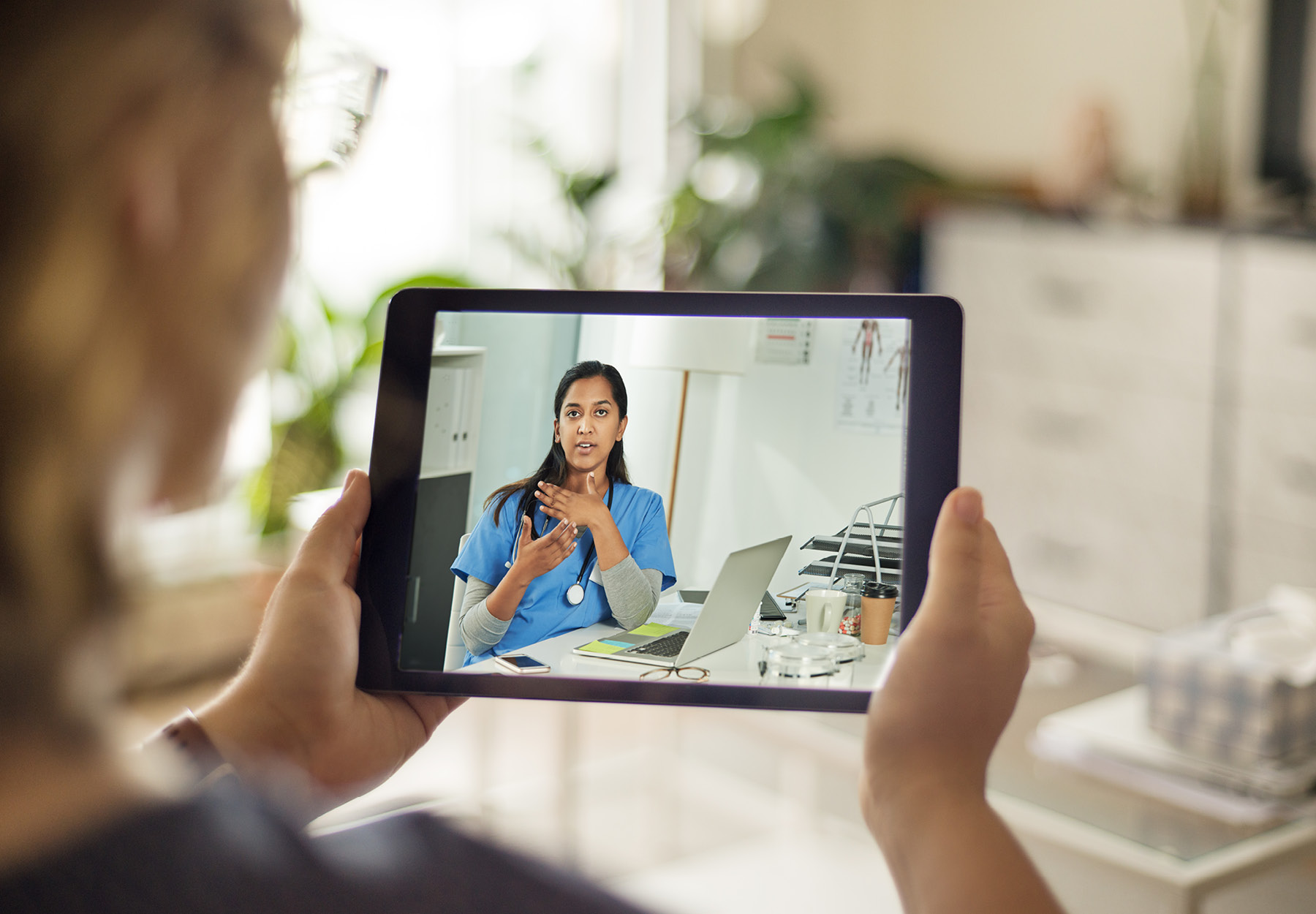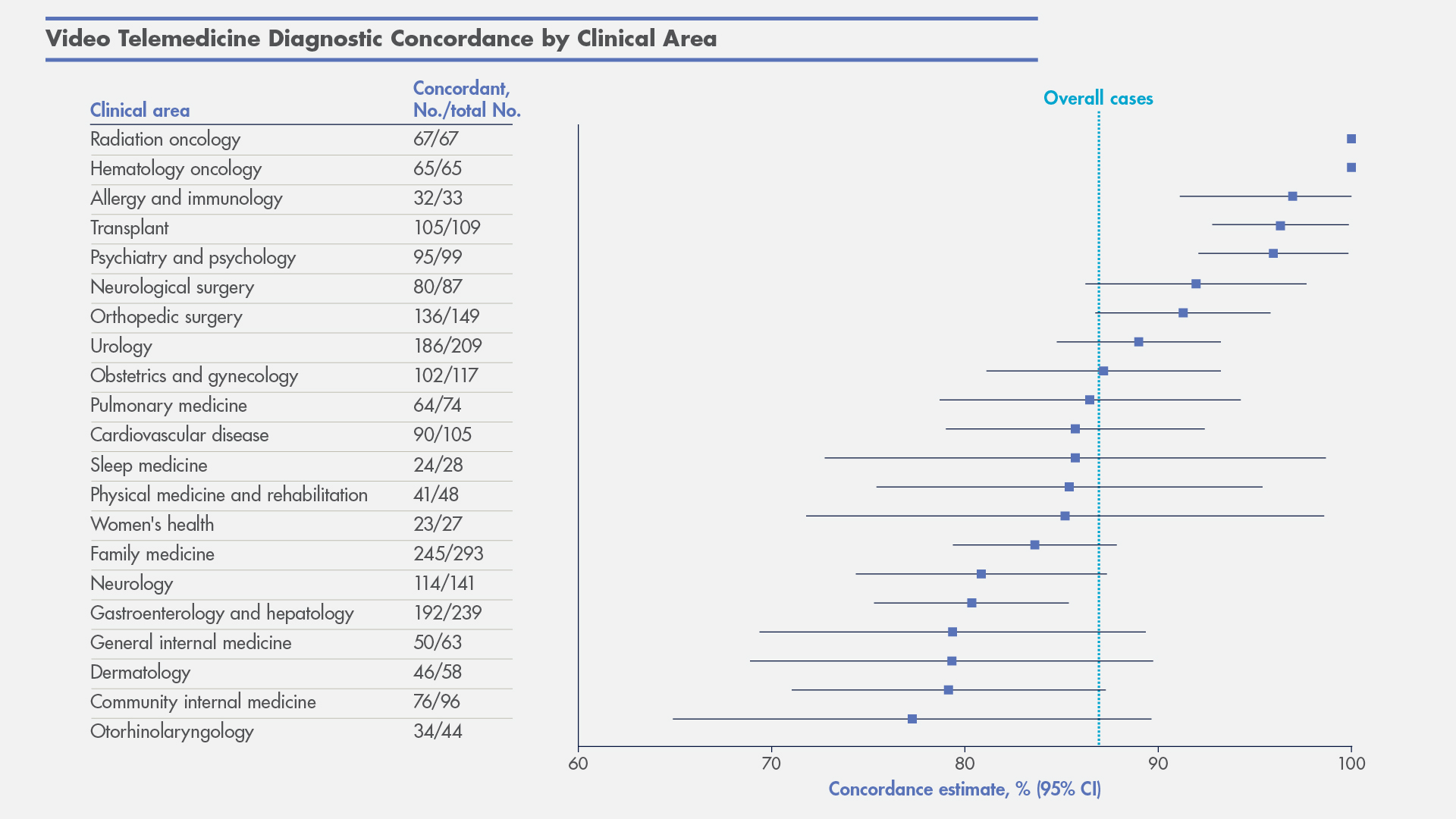New Study Supports Accuracy of Diagnoses from Video Visits
Video telehealth during the early period of the COVID-19 quarantine was actually highly effective in providing accurate diagnoses, research shows.

Once an offense that would have cost physicians their license, diagnosing patients via telehealth video became a necessary measure when patients were in COVID-19 lockdown. While far less accurate than the in-person version, video diagnosis would be a lot better than no diagnosis. At least, that was the thinking at the time. But new evidence suggests that the downside of the tradeoff might be far less than anybody would have expected and that video telehealth during the early period of the quarantine was actually highly effective in providing accurate diagnoses.
The Diagnostic Challenge
In the early months of the COVID-19 pandemic, many healthcare providers pivoted away from in-person to video telehealth visits to minimize exposure and conserve personal protective equipment and other supplies. At its height in April 2020, telehealth utilization in the US increased an estimated 20-fold, according to a JAMA Internal Medicine article. The question: Just how accurate were these video diagnoses? Stated differently, how much less accurate were diagnoses by video than they would have been had they been provided based on an in-person visit? Knowing the answer to these questions would enable providers to make evidence-based decisions about how to use video diagnosis more effectively. More specifically, this information would help determine which patients, specialties, and clinical problems the method works best for.
Unfortunately, there is not a whole lot of data addressing the accuracy of diagnoses from video telehealth visits. The few studies done before the COVID-19 pandemic were limited by sample size, scope, and representativeness. The good news is that the data generated as a result of the spike in telehealth visits during the pandemic allow for deeper and more comprehensive analysis.
The Mayo Clinic Study
With this in mind, a team of researchers from the Mayo Clinic set out to evaluate the accuracy of video diagnoses during the first quarantine period of the COVID-19 pandemic. The study involved nearly 2,400 patients who received a video diagnosis during the 90-day period from late March to late June 2020, during which time telehealth use by Mayo Clinic facilities increased by nearly 11,000 percent. The study patients had an age range of 37 to 64 and their median age was 53. In terms of sex, 1,381 (57.7 percent) identified as female and 1,012 (42.3 percent) identified as male.
To participate in the study, subjects had to have received telehealth consultation and an in-person follow up visit in the same clinical department for the same indication within 90 days. “The provisional diagnosis made during the video telemedicine visit was compared with the reference standard diagnosis by two blinded, independent medical reviewers,” according to the study abstract. The researchers then used a multivariate logistic regression model to determine factors significantly related to diagnostic concordance.
“The size of our patient cohort, the breadth of medical and surgical practices, the use of multiple independent blinded medical reviewers, and the individualized methods we used to analyze data allowed for a high degree of confidence in the reported diagnostic concordance of telemedicine video consults,” the researchers noted in the study, which was published in JAMA Network Open on Sept. 2.
The Study Findings
Perhaps the key takeaway from the study is that of the 2,393 diagnoses made, 2,080 (86.9 percent) were concordant with in-person reference standard diagnoses, at a confidence interval (CI) of 95 percent. “This diagnostic study of video telemedicine visits yielded a high degree of diagnostic concordance compared with in-person visits for most new clinical concerns,” the researchers wrote.
Significantly, diagnostic concordance between telehealth and in-person visits for patients who presented via telehealth was significantly lower for new primary care (81.3 percent, or 405 of 498 cases) than specialty care (88.4 percent, or 1,675 of 1,895 cases), with the degree of difference varying by medical specialty and ICD-10 code diagnosis.
The study also compared accuracy by medical specialty and clinical area, finding that concordance ranged from 77.3 percent for otorhinolaryngology to 100 percent for oncology:

Takeaway
“These findings suggest that video telemedicine visits to home may be good adjuncts to in-person care,” the researchers concluded. But caveats also apply. Based on the lower concordance of primary care diagnosis, the researchers suggest that telehealth for new patients or those presenting new clinical problems may benefit from having an in-person follow-up sooner, especially for diseases that are typically confirmed by physical examination, neurological testing, or pathology.
Subscribe to Clinical Diagnostics Insider to view
Start a Free Trial for immediate access to this article